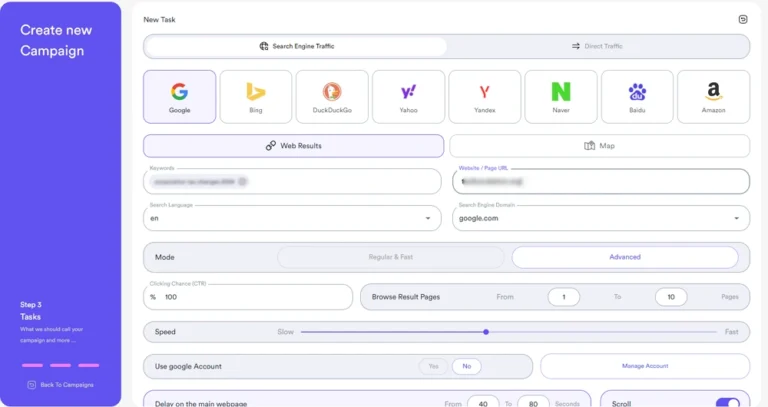Introduction to Mahjong
Mahjong is a traditional Chinese game that has fascinated players for centuries. Believed to have originated during the Qing dynasty in the mid-to-late 19th century, it is widely considered to have evolved from earlier Chinese card games. Its exact origins are still a matter of debate, but Mahjong is characterized by its use of a set of 144 tiles, which are intricately decorated with symbols, numbers, and characters. While the game has variations in rules and play style in different regions, its core principles remain largely consistent across cultures.
The significance of Mahjong extends beyond mere entertainment; it is embedded within the social fabric of Chinese culture. Traditionally, Mahjong is played in groups, often involving family gatherings or friend reunions, which fosters connections and communal bonds. This aspect of the game emphasizes strategy, skill, and prescience, making it not only a test of chance but also of cognitive ability and social interaction. Over the years, Mahjong has garnered a reputation as a pastime that enhances social relationships, particularly amongst older generations.
<pwith a="" ability="" advent="" against="" alike.
The Basics of Mahjong Gameplay
Mahjong is a captivating tile-based game that originated in China and has grown in popularity globally. The primary objective of the game is to create a winning hand by forming specific combinations of tiles, known as melds, while also adhering to the rules surrounding tile use and placement. Understanding the fundamental rules and gameplay mechanics is essential for both novice and experienced players seeking to engage with Mahjong, whether in an online setting or during face-to-face games.
To begin a game of Mahjong, players must first set up the board. This involves arranging the tiles into a compact wall, typically consisting of 144 tiles in total. The game is usually played by four players, although variations can exist for differing numbers of participants. Once the wall is constructed, players take turns drawing tiles and aiming to improve their hand while simultaneously aiming to reduce the potential combinations available to their opponents.
Mahjong tiles are categorized into several types, including suit tiles such as Bamboo, Characters, and Circles, as well as honor tiles which consist of Winds (East, South, West, North) and Dragons (Red, Green, White). Understanding the different types of tiles and their respective values is critical, as they dictate the possible strategies for winning. Players should also be familiar with the concept of pairs, sequences, and triplets which are crucial to achieving a complete hand.
During each turn, players draw a tile from the wall and then discard a tile from their hand, signifying the completion of their turn. This process continues until a player completes their winning hand or if the wall is entirely drawn. Successful Mahjong gameplay requires a combination of strategy and luck, as players must choose their tiles wisely while keeping an eye on their opponents’ moves. With an understanding of these basic mechanics, players can fully enjoy the experience of Mahjong, both in physical and digital formats.
Types of Mahjong Games Available Online
Online Mahjong offers a diverse array of game types that cater to different preferences and skill levels. Among the most popular variants are traditional formats such as Chinese Mahjong, Japanese Riichi Mahjong, and American Mahjong. Each of these versions has unique rules, scoring methods, and gameplay strategies, contributing to their appeal among players worldwide.
Chinese Mahjong, often considered the original form, is played with a set of 144 tiles and typically involves four players. The game emphasizes forming melds and pairs to achieve a winning hand. Players must navigate through various scoring systems that take into account concealed hands and special patterns, adding layers of strategy to the game. Online platforms frequently provide tutorials and practice modes to help newcomers grasp these concepts before engaging in competitive play.
Japanese Riichi Mahjong introduces distinct elements such as the “Riichi” bet, allowing players to declare a readiness for winning while revealing a tile. This version typically utilizes 136 tiles and has an intricate scoring system that rewards specific types of hands and combinations. The strategic depth of Riichi Mahjong is heightened with the use of dora tiles, which enhance the value of certain melds, making it a favorite for those who appreciate complex gameplay.
American Mahjong, on the other hand, integrates elements from both traditional Mahjong and poker-like styles. Played with 152 tiles, it utilizes a unique game card that modifies scoring methods and objectives for each season. This variant allows players to customize their strategies significantly and is known for its social and lively atmosphere, particularly during games among friends or family.
In addition to these traditional variants, various online adaptations have emerged. Many platforms now offer themed Mahjong experiences, combining elements from popular culture or even incorporating puzzle-based gameplay. These adaptations often appeal to casual gamers looking for a more relaxed and entertaining version of the classic game.
Getting Started with Online Mahjong: A Step-by-Step Guide
Embarking on the journey to play online Mahjong can be an exciting yet overwhelming experience for newcomers. To ensure a smooth start, it is crucial to select the right online platform. Numerous websites and apps offer Mahjong games, varying in user experience, graphics, and community size. Look for sites that provide robust reviews, a wide range of game variations, user-friendly interfaces, and active player communities. This can significantly enhance your experience as you join games and meet other Mahjong enthusiasts.
Once you have chosen a platform, creating an account is typically the next step. The registration process usually requires basic information, such as your email address and desired username. Some platforms may also ask for demographic details for statistical purposes, such as age or location. Read through terms and conditions carefully, especially regarding privacy policies and responsible gaming commitments. After confirming your account through an email link or a verification code, you may also need to set your display preferences regarding game environments and notifications.
Navigating the interface of online Mahjong games is an essential skill that can be developed with practice. Once logged in, explore the platform’s layout to understand how to access different game modes, chat functions, and community features. Most importantly, familiarize yourself with the specific rules and play styles of online Mahjong, as they may vary slightly from traditional formats. Many platforms offer practice modes where you can play against AI opponents before challenging real players. This allows for a comfortable transition as you hone your skills and become acquainted with the gameplay mechanics, strategies, and nuances inherent to this ancient game.
Playing against computers will help you understand the rules quickly, while challenges from real opponents will provide a more thrilling and rewarding experience as you improve. Remember to consult the platform’s tutorials or community forums if you have any questions or require tips on gameplay. By following these steps, you will set a solid foundation to enjoy the captivating world of online Mahjong.
Tips and Strategies for Winning at Online Mahjong
Winning at online Mahjong requires both skill and strategy. One of the most essential skills to develop is tile memorization. Keep track of the tiles that have already been played to make informed decisions on your next moves. This will allow you to calculate which tiles are still in play and which combinations are achievable, giving you a significant edge over your opponents.
Understanding the flow of the game is also crucial. Each round in Mahjong presents various possibilities, and players should remain adaptable to changes. Identify patterns in your opponents’ play styles. Are they aggressive in their tile selections, or do they focus on defensive strategies? Recognizing these tendencies will enable you to adjust your tactics accordingly, either mitigating potential threats or capitalizing on their weaknesses.
Defensive play should not be overlooked. While it is important to build your own hand, staying aware of what others are collecting helps prevent them from completing their winning combinations. Play cautiously, especially when you see another player nearing a winning hand. Discard tiles that are less likely to aid their progression, thus improving your chances of survival during the match.
Additionally, developing a winning mindset can greatly influence your performance. Cultivate patience and maintain a calm demeanor, regardless of the game’s state. Emotions can lead to impulsive decisions, which may jeopardize your overall gameplay. Instead, approach each round with focus and clarity, analyzing every move not just in terms of immediate benefits but also for long-term strategies.
Finally, practice is paramount. Engage in different online Mahjong platforms to expose yourself to various game styles and competition levels. Each game will enhance your skills and deepen your understanding of the dynamics at play, ultimately increasing your chances of success in online Mahjong.
The Social Aspect of Online Mahjong
Online Mahjong extends beyond mere gameplay; it serves as a vibrant social platform that fosters connections among players from diverse backgrounds. One of the primary social features is the multiplayer option, where enthusiasts can engage with friends or meet new opponents in real-time. This interactive dimension not only enhances the gaming experience but also enables players to share strategies, tips, and ideas, creating a collaborative atmosphere.
In addition to the multiplayer functionality, many online Mahjong platforms incorporate chat features that allow players to communicate during games. This real-time chat option promotes social interaction, letting participants discuss their moves or express friendly banter. Players often form friendships through these engagements, sharing experiences that extend beyond the Mahjong table. The ability to communicate effectively adds depth to the game, making it a more enjoyable experience for all involved.
Moreover, online Mahjong communities often organize events and tournaments, bringing players together for friendly competition or casual play. These community events play a significant role in fostering a sense of belonging among participants. Players can not only test their skills against one another but also build rapport, share cultural insights, and learn from differing playing styles. Such collective experiences heighten players’ excitement and commitment to the game, highlighting the integral role of social interaction in online platforms.
Ultimately, the social aspects of online Mahjong are not merely supplementary; they enhance the overall gaming experience. By promoting connections, encouraging communication, and organizing community events, online Mahjong engenders a sense of camaraderie that is essential for both new and experienced players alike. Engaging with others in this vibrant digital landscape enriches the game significantly, proving that online Mahjong is as much about community as it is about competition.
Mobile Mahjong: Gaming on the Go
The rise of mobile gaming has transformed the way players engage with traditional games like Mahjong. With advancements in technology, players can now enjoy Mahjong anytime and anywhere, making it more accessible than ever. Mobile Mahjong applications have become increasingly popular, allowing enthusiasts to play on their smartphones and tablets, which cater to a generation that values convenience and flexibility.
When comparing mobile Mahjong experiences to that of desktop versions, there are notable differences. Desktop Mahjong games often provide a more extensive range of features, including advanced graphics, larger display screens, and enhanced gameplay functionalities. However, mobile versions usually offer a streamlined experience conducive to on-the-go gaming, allowing players to quickly jump into a match during their daily commute or while waiting in line. The user interface on mobile devices has also been optimized for touch controls, providing a unique interaction that differs from mouse-based gameplay on desktops.
Several mobile Mahjong applications have carved out a significant presence in the market. Apps such as Mahjong City Tours and Mahjong Solitaire are prominent choices among players, providing engaging levels and various game modes. These applications not only focus on the classic Mahjong experience but also integrate innovative elements to keep players interested. Additionally, many of these games offer online multiplayer options, enabling social interaction that enhances the overall experience.
However, playing Mahjong on mobile devices does come with its share of drawbacks. Smaller screens can strain visibility and affect gameplay, particularly for intricate tile patterns that require careful observation. Moreover, prolonged sessions on mobile might lead to fatigue. Therefore, optimizing one’s mobile gaming experience is crucial. Players are encouraged to adjust in-game settings for visibility, use headphones for better audio experience, and take regular breaks to prevent discomfort. Engaging with Mahjong through mobile applications not only offers flexibility but also poses challenges that, when addressed, can greatly enhance overall enjoyment.
The Future of Online Mahjong
As technology continues to advance at a rapid pace, the future of online Mahjong is poised for significant transformation. One of the most exciting trends on the horizon is the integration of virtual reality (VR) and augmented reality (AR) into online gaming platforms. These technologies promise to revolutionize the way players interact with Mahjong, creating immersive environments that feel almost as real as sitting around a physical table with friends. Imagine donning a VR headset and finding yourself in a beautifully rendered Mahjong parlor, complete with authentic sounds and visuals that enhance the gaming experience.
Furthermore, AR could allow players to overlay digital elements onto their physical surroundings, enabling an innovative way to engage in Mahjong games while still enjoying the tangible world around them. Such advancements are likely to attract a broader audience, making Mahjong more accessible and appealing to younger generations who may favor high-tech gaming experiences over traditional ones.
Alongside these technological improvements, the online Mahjong community is expected to grow substantially. With the increasing popularity of mobile devices and online platforms, we can anticipate a surge in the number of casual and competitive players. This growth will not only lead to a larger player base but could also foster the development of virtual tournaments and global Mahjong leagues, where players from diverse backgrounds can compete against one another. The ability to connect with other enthusiasts from around the world presents invaluable opportunities for cultural exchange and deeper appreciation of Mahjong as a game.
In summary, the future of online Mahjong holds immense potential for growth and innovation. By embracing emerging technologies such as VR and AR, the gaming landscape is set to become more engaging, inclusively drawing in a wider demographic of players. As these advancements unfold, they will not only enhance the gameplay experience but also solidify Mahjong’s place within the rapidly evolving world of online gaming.
Conclusion: The Timeless Appeal of Mahjong Online
Mahjong, a classic tile-based game that originated in China, has transcended its traditional roots to capture the hearts of players worldwide. Its transition to online platforms has revitalized interest in the game, making it more accessible than ever. As individuals increasingly seek engaging and strategic pastimes, Mahjong online presents an enticing opportunity to connect with both the game’s intricate dynamics and its rich cultural heritage.
The enduring popularity of Mahjong can be attributed to several factors. Firstly, the game’s blend of skill, strategy, and chance appeals to a diverse range of players. Whether you are a seasoned expert or a newcomer, the challenge of outmaneuvering opponents while maintaining a keen eye on tile patterns provides endless enjoyment. This balance of complexities keeps players coming back for more, fostering a robust and vibrant community around online Mahjong.
Moreover, the game’s adaptability in the online space allows for innovative variations and unique playing experiences that cater to different preferences. With numerous platforms offering various modes of play, it is easy for players to find a setting that suits their style, whether it be casual games or competitive tournaments. The accessibility of online Mahjong also plays a crucial role; players can engage with the game anytime and from anywhere, breaking down geographical barriers and facilitating connections across cultures.
As interest in Mahjong continues to burgeon, it is clear that the game’s rich history and evolving nature contribute significantly to its timeless appeal. For those looking to immerse themselves in this captivating game, the world of online Mahjong awaits. By joining this global community of players, individuals can not only enjoy an engaging pastime but also become part of a tradition that has endured throughout generations.





